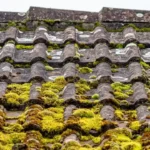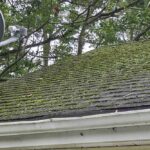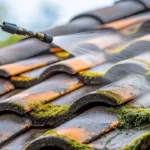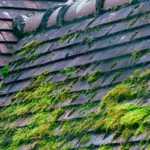When considering modern solutions for eco-friendly homes, the concept of a green roof often emerges as a popular choice. This innovative approach not only enhances the aesthetic appeal of buildings but also offers numerous insulation benefits. In this article, we will delve into the compelling reasons why homeowners should opt for green roof insulation.

What is a Green Roof?
A green roof is a roofing system that incorporates vegetation and a growing medium, all installed over a waterproofing membrane. It may also include additional layers such as a root barrier and drainage system. These roofs are becoming increasingly popular in urban settings due to their environmental benefits and architectural appeal.
The Key Insulation Benefits of Green Roofs
1. Improved Thermal Performance
One of the primary benefits of a green roof is its ability to enhance the thermal performance of a building. The layers of vegetation and soil act as natural insulators, reducing the need for artificial heating and cooling systems. This not only decreases energy consumption but also lowers utility bills for homeowners.
2. Sound Insulation
Besides thermal insulation, green roofs offer excellent sound insulation. The layers of plants and soil can absorb, reflect, or deflect sound waves, making them particularly beneficial in noisy urban environments.
3. Environmental Impact
The environmental benefits of green roof insulation cannot be overstated. These roofs contribute to biodiversity by providing habitats for various insects and birds. They also help in reducing the urban heat island effect, which is crucial for combating climate change.
How Green Roofs Contribute to Energy Efficiency
Green roofs play a significant role in enhancing a building’s energy efficiency. By reducing the amount of heat that penetrates the building during summer and retaining warmth during winter, they drastically cut down on the need for heating and cooling systems. This transition towards energy efficiency is a step forward in achieving sustainable living.
Cost Implications and Long-term Savings
1. Initial Investment
While the initial cost of installing a green roof may be higher than traditional roofing, the long-term savings in energy bills make it a worthwhile investment. Additionally, government incentives for sustainable building practices can help offset these initial costs.
2. Extended Roof Lifespan
Another financial advantage is the extended lifespan of a green roof. The layers of vegetation protect the roof membrane from UV rays and temperature fluctuations, which can prolong the roof’s life by two to three times compared to conventional roofs.
Improving Air Quality
By absorbing carbon dioxide and releasing oxygen, green roofs significantly improve air quality. This is particularly beneficial in urban areas where pollution levels are high. The plants on a green roof can also trap dust and pollutants, further cleansing the air.
Water Management Benefits
Green roofs are excellent for managing stormwater. The vegetation absorbs rainwater, reducing runoff and alleviating pressure on drainage systems. This can be particularly advantageous in preventing urban flooding.
For more insights on efficient water management, explore our article on roof drainage.
Enhancing Urban Aesthetics
The visual appeal of green roofs is undeniable. They bring a touch of nature into urban landscapes, offering a serene escape from the concrete jungle. The aesthetic value added by green roofs often increases property value.
Contributing to Urban Biodiversity
By creating habitats for various species, green roofs contribute to urban biodiversity. They support a range of wildlife, including birds and beneficial insects, thus promoting ecological balance.
Challenges and Considerations
1. Structural Requirements
Before installing a green roof, it’s essential to assess the building’s structural capability to support the additional weight. Consulting with professionals is crucial to ensure safety and compliance with local building codes. For guidelines, refer to our article on roof drainage compliance.
2. Maintenance Needs
Though green roofs require minimal maintenance, regular inspections are necessary to ensure the health of the plants and the integrity of the roof membrane. For tips on maintaining roofing systems, visit our inspection guide.
Case Studies of Successful Green Roofs
Several landmark buildings worldwide showcase successful green roof projects. These examples highlight the multifaceted benefits of adopting this sustainable practice.
Future of Green Roofs in Urban Planning
As cities continue to grow, the integration of green roofs in urban planning becomes increasingly crucial. They offer a viable solution to many environmental challenges faced by urban areas today.
Conclusion
In conclusion, the benefits of green roof insulation extend far beyond mere aesthetics. They offer practical solutions to energy efficiency, environmental conservation, and urban living challenges. By choosing green roofs, homeowners contribute to a more sustainable and resilient future.
For further reading on the environmental impact of green roofs, check out this external study.

FAQs
1. How does a green roof improve energy efficiency?
A green roof enhances energy efficiency by providing natural insulation, reducing the need for artificial heating and cooling systems, and thus lowering energy consumption.
2. Are there any maintenance requirements for green roofs?
Yes, while green roofs are generally low-maintenance, they require regular inspections to ensure plant health and roof integrity.
3. Can green roofs be installed on any building?
Not every building can support a green roof. It’s essential to assess the structural capacity and consult with professionals before installation.
This article contains affiliate links. We may earn a commission at no extra cost to you.








